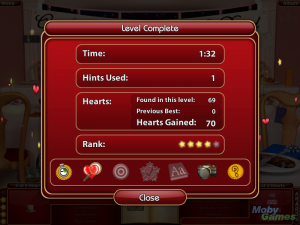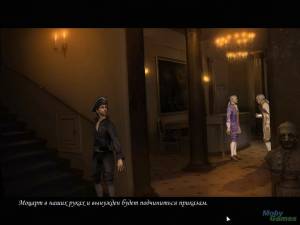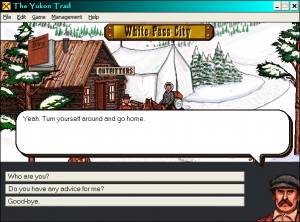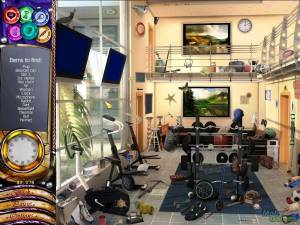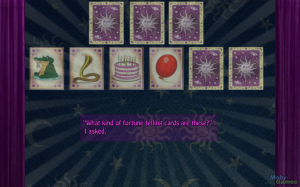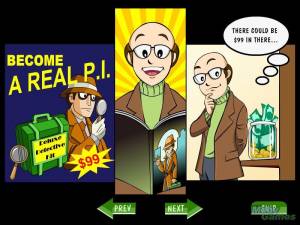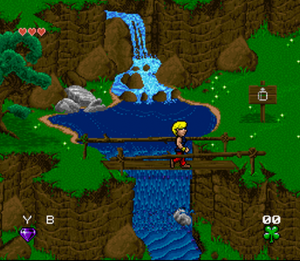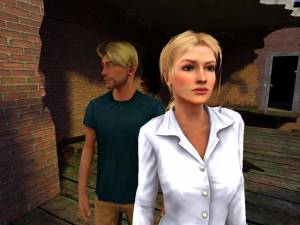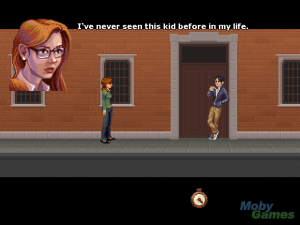Game Classification
Cassandra's Journey 2: The Fifth Sun of Nostradamus JoyBits, JoyBits, 2009
Classification
VIDEO GAMEKeywords
Market
This title is used by the following domains:- Entertainment
Audience
This title targets the following audience:Age : 12 to 16 years old / 17 to 25 years old
General Public
Gameplay
The gameplay of this title is Game-based(designed with stated goals)
The core of gameplay is defined by the rules below:
Similar games
 On her last adventure, the psychic Cassandra was searching for a lost magical ring with the help of Nostradamus spirit. Now she is asked to use her abilities to find Michael, the missing brother of her friend Violet, that disappeared after meddling with the occult. Once again, the ghost of the ancient astrologer will guide her and help fight an evil and powerful force that wants to destroy the world.
On her last adventure, the psychic Cassandra was searching for a lost magical ring with the help of Nostradamus spirit. Now she is asked to use her abilities to find Michael, the missing brother of her friend Violet, that disappeared after meddling with the occult. Once again, the ghost of the ancient astrologer will guide her and help fight an evil and powerful force that wants to destroy the world.
Like its predecessor, Cassandra's Journey 2: The Fifth Sun of Nostradamus is a hidden object game with a supernatural theme. In this installment, some elements of the adventure genre were added to the simple seek-and-find mechanics of the first title. Most of the time, the main objective still is to find and click on all the items listed at the bottom of the screen, on scenes related to the plot and filled with assorted objects. In some locations, the list displays riddles about the items or silhouettes instead of their names. Entries written in blue are pending tasks, where the player must perform a scenery interaction to complete them.
Some of the collected items are stored in the inventory, accessible through an option at the bottom interface. They have to be used as in most point-and-click adventures, by dragging and dropping them on logical places of the scenery to perform an action or complete a task.
The help system is extensive with five types of hints available as buttons at the top-left side. Each hint consumes a variable amount of blue mana, with more explicit hints costing more of it. The mana vial is continuously renewed, slowly refilling after being partially drained. From top to bottom, the pointing hint takes 90% of the mana and shows the exact position of one of the required items; the area hint costs 50% and highlights the approximate location of a random list object; the compass hint consumes 80% and makes the crystal ball at the bottom glow brighter when the cursor is near one of the list items; the photo hint uses 70% and shows a picture of the object; the silhouette hint takes 60% and displays an outline of a selected object on the crystal ball.
As before, magic tricks and mini-games appear between chapters. They are implementations of classic concepts, like four variations of solitaire, jigsaw puzzles, a block removal challenge with cars on a parking lot, a tile-matching game with Mayan symbols, a Pipe Dream puzzle with electronic circuits, a Mahjong game, and other puzzles that take place on a separate screen, where a mechanism of some sort has to be manipulated directly to solve them. After being completed in the main story, the games can be replayed later from the main menu. [source:mobygames]
Distribution : Retail - Commercial
Platform(s) : Macintosh - PC (Windows)
 Français
Français English
English



